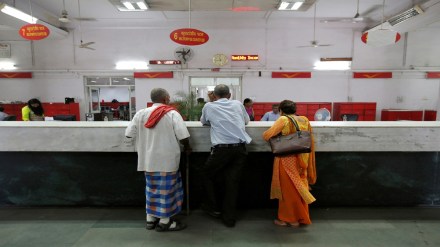Strongly refuting the Congress party’s allegation that Atal Pension Yojana (APY) is “poorly designed,” finance minister Nirmala Sitharaman on Tuesday said that the subsidised scheme meant for the poor and low-income workers in the unorganised sector is not only better-targetted, but also is deliberately designed to encourage beneficiaries to keep contributing. The minister also highlighted that the scheme guarantees a minimum of 8% return.
“Atal Pension Yojana is designed based on best practice choice architecture to automatically continue the premium payment unless the subscriber opts out. This is a deliberate and beneficial feature which is in the best interest of the subscribers,” Sitharaman said in post on X. Instead of requiring people to decide each year to continue, they have to take a decision to discontinue, she said, adding, this makes many of them take the right decision and save for their retirement.
Congress leader and former Union minister Jairam Ramesh had earlier in the day termed APY a “very poorly-designed scheme” and a “paper tiger” that needs officials to “hoodwink and coerce people into participating in it.”
Sitharaman said: “The minimum return under the APY is guaranteed by the GoI to be at least 8%, regardless of prevailing interest rates and returns. This is an attractive guaranteed minimum return. GoI pays a subsidy to PFRDA to make up for any shortfall in actual returns,” she said.
APY is meant for people in the age group of 18-40 years who is not an income tax-payee. All subscribing workers are eligible for pension of up to ₹5,000 per month on attainment of 60 years of age. The government co-contributes 50% of the total contribution or ₹1,000, whichever is lower, to each eligible subscriber account, for a period of 5 years.
If higher investment returns are received on the contributions of subscribers of APY, higher pension would be paid to the subscribers: In fact, currently the returns are more than 8%, Sitharaman said.
Aided by favourable market conditions, the assets under management under the National Pension System (NPS) including Atal Pension Yojana rose about 28% on year to Rs 11 trillion as of mid January this fiscal, and are poised to reach Rs 12 trillion by March 31.
Despite the near-saturation in enrolment of government employees, the subscriber base under NPS rose by 16% on year to 70.69 million as of January 13. As many as 7.44 million new subscribers have been added so far in the current financial year. The average returns generated by pension funds under NPS have been very attractive. Equities have given 26.94% in one year and 13.3% since inception.
While many state governments are shifting to the old pension scheme (OPS), a recent RBI paper warned of the fiscal consequences of the move. If all states embrace the defined-benefits scheme (OPS), the additional outgo would be at par with what it would have been under the New Pension System (NPS) by as early as mid-2030s, and eventually exceed it by 2040, the paper said. “…Thereafter, the additional burden will increase rapidly, reaching around 0.9% of GDP annually by the early 2060s,” the authors of the report warned, while estimating the fiscal cost of OPS to be 4.5 times that of NPS. If the rate of nominal GDP expansion turns to be less than 10% assumed, the fiscal burden from OPS would be even higher.
The Modi 3.0 government, meanwhile, is likely to tread a middle path between the fiscally expensive OPS and the reform-oriented National Pension System. One option being considered is to offer guaranteed pension to government staff at around 50% of the last pay drawn under the NPS by tweaking the existing scheme without burdening the exchequer too much.
Currently, under the NPS, also called new pension scheme, 60% of the accumulated corpus from contributions during a person’s working years is allowed to be withdrawn at the time of retirement. Such withdrawal is also tax-free. The balance 40% is invested in annuities, which according to an estimate, could provide a pension equivalent of about 35% of the last pay drawn. However, it is not a guaranteed pension as returns are linked to markets.
